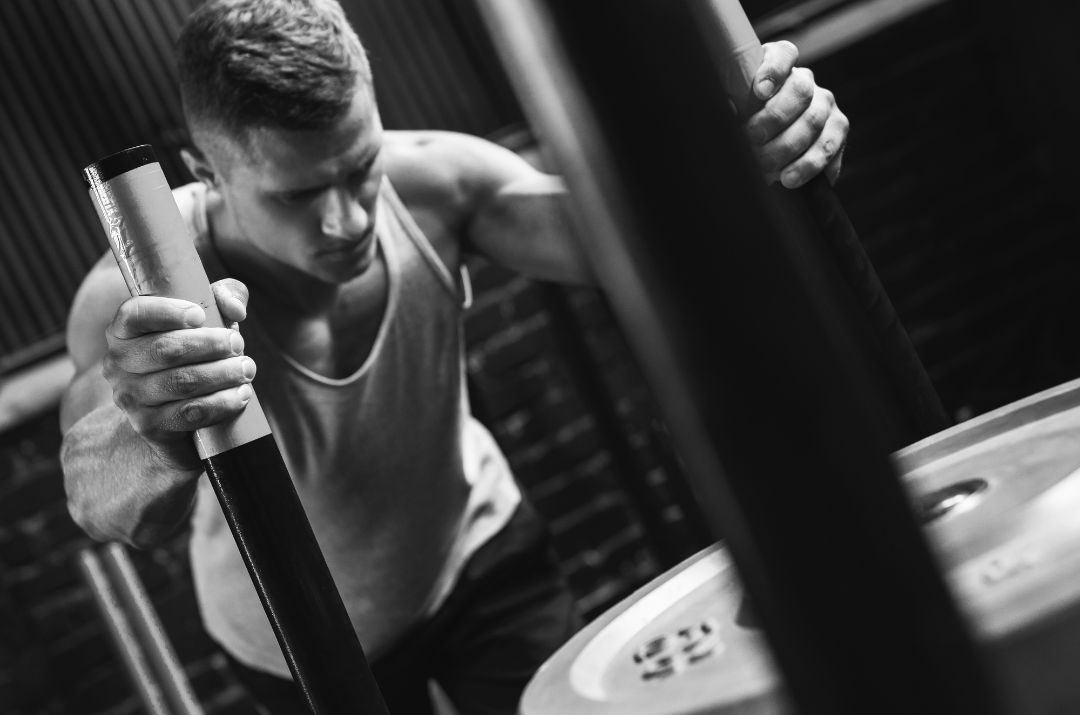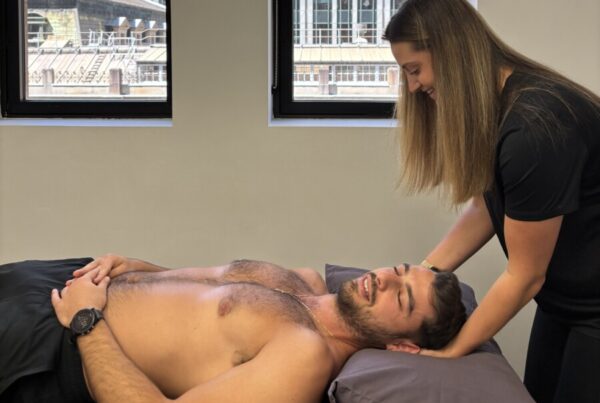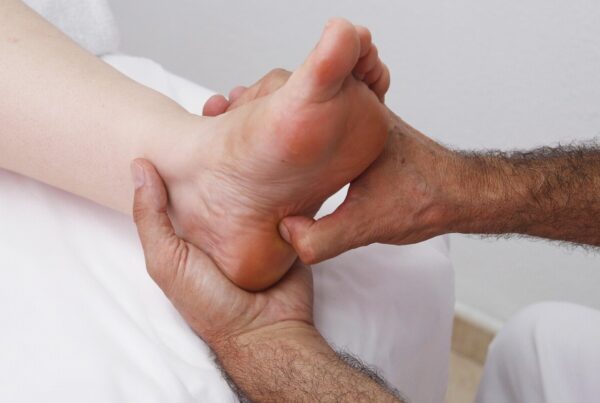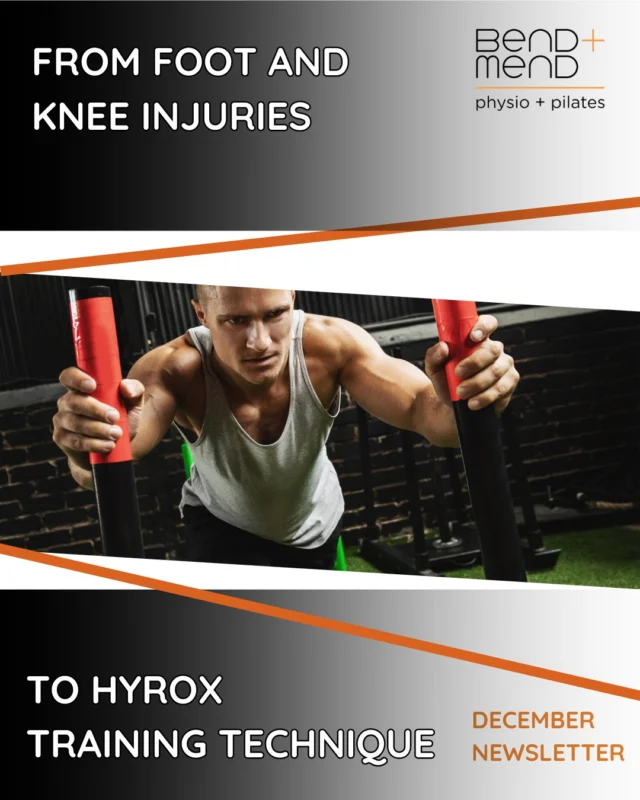As an Ergonomic Physiotherapist, I spend much of my day helping people understand how their bodies interact with their work environment. Whether it’s an office desk in the city or a home office tucked into a spare bedroom, the way we move, sit, and position ourselves at work has a profound effect on our health and well-being. Over the years, I’ve seen how small ergonomic adjustments can prevent pain, boost productivity, and enhance overall mental well-being.
In this blog, I’ll share some practical advice for creating a healthy, safe workspace both at home and in the office, and explore how Pilates can play a powerful role in supporting both physical and mental health for people in desk-based roles.
The Importance of Ergonomics in the Modern Workplace
We spend an enormous portion of our lives at work. For many Australians, that means long hours sitting at a desk, often in front of multiple screens, and sometimes without the best ergonomic setup. While the human body is designed for movement, modern work demands stillness such as prolonged sitting, repetitive motions, and sustained concentration, all of which can take a toll over time.
Ergonomics is the science of designing a workspace that fits the individual, rather than forcing the body to adapt to a poorly designed environment. As physiotherapists, we view ergonomics not just as a matter of comfort, but as a cornerstone of injury prevention.
Poor ergonomics can contribute to:
- Neck and shoulder pain
- Lower back discomfort
- Repetitive strain injuries (RSIs/overuse injuries) such as wrist or forearm pain
- Headaches
- Eye strain and fatigue
But good ergonomics isn’t just about avoiding discomfort—it’s about optimising performance, focus, and well-being. When your body feels supported, your mind functions better too.
Common Ergonomic Challenges in Office Settings
When I visit office environments, I often notice a few recurring issues that contribute to musculoskeletal strain. These include:
- Desks or chairs set at the wrong height, leading to hunched shoulders or a slouched posture.
- Monitors positioned too high or low, forcing the neck into awkward positions.
- Keyboard and mouse placement that encourages wrist extension or shoulder elevation.
- Static sitting—staying in one position for hours without breaks or movement.
Fortunately, small, deliberate changes can make a big difference.
Practical Ergonomic Tips for Office Workers
Here are some key adjustments I recommend for those working in a traditional office setting:
- Set Your Chair Up Correctly
- Adjust your chair height so that your feet are flat on the floor (or on a footrest) and your knees are level with or slightly below your hips.
- Sit back fully so your lower back is supported by the chair’s lumbar support.
- Avoid perching on the edge of your seat—this often leads to slouching and increased pressure on your spine.
- Position Your Desk and Screen
- Your desk height should allow your elbows to rest comfortably at about 90 degrees with your shoulders relaxed.
- Place your monitor about an arm’s length away, with the top of the screen roughly at eye level.
- If you use multiple screens, make sure your main screen is directly in front of you to prevent repetitive neck rotation.
- Keyboard and Mouse Setup
- Keep your keyboard and mouse close enough that your elbows remain near your body.
- Avoid resting your wrists on the edge of the desk—use a soft wrist rest if necessary.
- If you spend much time typing, consider a split or ergonomic keyboard to reduce wrist strain.
- Incorporate Movement
Even with perfect ergonomics, the human body isn’t designed to stay still all day.
- Aim to stand, stretch, or walk briefly every 30–45 minutes.
- Take calls standing up, walk to speak with a colleague rather than sending an email, or schedule short “movement breaks” into your day.
- Adjustable sit-to-stand desks are an excellent investment if your workplace supports them.
Working from Home: A Growing Ergonomic Challenge
The shift towards remote and hybrid work has created new ergonomic challenges. While working from home offers flexibility, many people find themselves working from kitchen benches, dining tables, or even couches—none of which are ideal for posture or spinal health.
As a physiotherapist, I’ve seen a significant rise in neck, shoulder, and back issues since more people began working from home. The good news is that with a few thoughtful adjustments, your home office can be both comfortable and supportive.
Ergonomic Tips for Working from Home
- Create a Dedicated Workspace
Even if space is limited, try to create a consistent area where you can work comfortably each day. Avoid working from the bed or couch; this not only strains your body but can also make it harder to mentally “switch off” at the end of the day.
- Invest in the Basics
If possible, set up a proper chair and desk. A supportive chair with adjustable height and backrest is worth every cent. If your table is too high, use a cushion to raise your seat.
- Laptop Users: Use External Equipment
If you use a laptop as your main device, consider investing in:
- A separate keyboard and mouse
- A laptop stand or even a few sturdy books to raise the screen to eye level
This setup allows you to maintain a more natural posture for both your neck and wrists.
- Light and Airflow Matter
Good lighting reduces eye strain, and adequate ventilation helps maintain focus. Natural light is ideal but avoid glare on your screen by positioning your workspace perpendicular to windows.
- Move Frequently
At home, it’s easy to lose track of time and forget to move. Try setting a timer or using a smartwatch reminder to stand up or stretch regularly. Even a short walk to the kitchen or a few shoulder rolls can help.
The Role of Movement in Preventing Pain
Movement is medicine—perhaps one of the most powerful preventive tools we have. When we sit for prolonged periods, blood flow decreases, muscles tighten, and joints become stiff. Over time, this can lead to postural imbalances and chronic discomfort.
As a physiotherapist, I encourage all my patients to incorporate micro-movements throughout the day:
- Gently rotate your shoulders and neck every 30 minutes.
- Perform a few seated spinal twists or stand up to stretch your hip flexors.
- Alternate between sitting and standing if your setup allows.
Even just two minutes of light movement can relieve tension and re-energise your body and mind.
Pilates: A Powerful Tool for Physical and Mental Health
One of my favourite recommendations for office workers is Pilates—a movement practice that perfectly complements the demands of modern desk-based life.
Developed by Joseph Pilates in the early 20th century, Pilates focuses on controlled, mindful movements that strengthen the deep stabilising muscles of the core, improve posture, and enhance flexibility. For people who spend much of their day sitting, it’s one of the most effective ways to restore balance and mobility.
The Physical Benefits of Pilates for Office Workers
- Improved Posture and Core Stability
Pilates strengthens the deep abdominal and back muscles that support good posture. A stronger core helps reduce the strain on your spine, shoulders, and neck, making it easier to maintain a neutral, upright position throughout the workday.
- Reduced Back and Neck Pain
By improving alignment and muscle balance, Pilates can relieve chronic tension and prevent many of the musculoskeletal issues associated with prolonged sitting. Regular practice encourages better awareness of posture, so you’re more likely to notice when you’re slouching or tensing your shoulders.
- Enhanced Flexibility and Mobility
Many office workers struggle with tight hip flexors, hamstrings, and shoulders. Pilates incorporates gentle stretching and mobility exercises that restore natural movement and prevent stiffness.
- Improved Circulation and Joint Health
Through its flowing, full-body movements, Pilates promotes better blood flow and joint lubrication, reducing fatigue and the risk of overuse injuries.
The Mental Health Benefits of Pilates
While the physical benefits of Pilates are well-known, its mental health advantages are equally significant. In our fast-paced world, it’s easy to carry work-related tension in both the body and mind. Pilates offers a unique opportunity to reconnect, refocus, and unwind.
- Mindfulness in Movement
Pilates requires focus and control—each exercise is performed with conscious attention to breathing, alignment, and flow. This mindful approach helps quiet mental chatter and bring awareness to the present moment, like meditation in motion.
- Stress Reduction
Deep, diaphragmatic breathing used in Pilates activates the parasympathetic nervous system, helping to reduce stress and promote relaxation. Many clients report feeling calm, clear-headed, and refreshed after a session.
- Improved Sleep and Recovery
By reducing muscle tension and promoting relaxation, Pilates can improve sleep quality—a key factor in both mental and physical recovery.
- Confidence and Body Awareness
Regular practice enhances your sense of control and connection with your body. Feeling strong and capable physically often translates into improved self-esteem and confidence at work and beyond.
How Pilates Helps You Switch Off After Work
One of the challenges I hear from many office workers is the difficulty of switching off after a long day—especially for those working from home, where the boundaries between work and personal life often blur.
Pilates provides a powerful antidote. When you’re engaged in a Pilates class, your focus naturally shifts inward. You become absorbed in your breath, your movements, and your body’s sensations. This mindful state helps draw attention away from the stresses of the day and anchors you in the present moment.
Regular evening practice can act as a “reset button”—helping your body unwind, your mind slow down, and your nervous system shift into recovery mode. Many of my patients tell me they feel both physically lighter and mentally clearer after class, even if they were feeling stressed or fatigued beforehand.
Integrating Ergonomics and Pilates: A Holistic Approach to Workplace Health
True workplace health isn’t just about avoiding injury—it’s about thriving physically, mentally, and emotionally. Ergonomic adjustments support the body throughout the workday, while Pilates helps maintain and restore balance, strength, and mobility outside of work. Together, they create a holistic foundation for well-being.
I often encourage organisations to take a proactive approach by offering workplace ergonomics assessments, team Pilates sessions, or well-being workshops. When staff feel supported, productivity, morale, and retention all improve.
For individuals, simply combining ergonomic awareness with regular Pilates practice can transform how you feel at work and at home.
Simple Daily Routine: Combining Ergonomic Awareness and Movement
To make it practical, here’s a quick daily checklist I often recommend to my clients:
Morning:
- Begin with a few gentle stretches—roll your shoulders, rotate your neck, and stretch your hamstrings.
- Check your desk setup before you start work.
During Work:
- Every 30–45 minutes, stand, stretch, or walk.
- Adjust your posture regularly and keep your shoulders relaxed.
- Practice a few deep breaths to reset your focus.
After Work:
- Spend 10–20 minutes on a Pilates mat session, focusing on breathing and mobility.
- Avoid screens for at least 30 minutes before bed to promote better sleep.
Final Thoughts
As an ergonomic physiotherapist, I’ve seen firsthand how workplace health and safety go far beyond compliance—they’re about empowering people to work comfortably, efficiently, and sustainably. Whether you’re in an office or working from home, a few small ergonomic adjustments and regular movement can dramatically improve your quality of life.
Pilates is a beautiful complement to modern working life. It builds physical resilience, enhances posture, and provides a mindful space to reconnect with yourself—helping you not only prevent injury but truly switch off and recharge.
Investing in your health at work is one of the most valuable investments you can make. Your body and mind will thank you for it—both now and for years to come.





